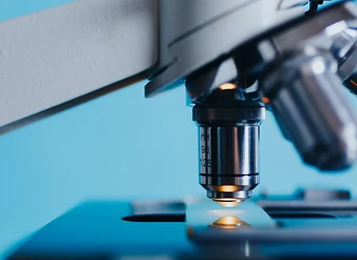

- Application Article
- Download
Hooke College

- About Us
- Team
- R & D and production
- Join Us
- Contact Us
- Qualification honor



In December 2022, the research team led by Li Bei from Changchun Institute of Optics and Mechanics, Chinese Academy of Sciences, and the team led by Chen Xueping from the First Affiliated Hospital of Chongqing Medical University applied the core product of HOOKE P300, to publish a paper titled "Classification of pathogenic bacteria by Raman spectroscopy combined with variant autoencoder and deep learning" in the Journal of Biophotonics. This study proposes a new pathogen classification method (VAE-LSTM) that combines Raman spectroscopy with VAE and LSTM. A large number of Raman spectra of pathogens were collected at the single-cell level, and VAE was used to generate a large number of Raman spectra that cannot be distinguished from real spectra for training LSTM and generating classification models. This method can greatly reduce the number of times Raman spectroscopy is collected. In addition, the combination of VAE and other deep learning models is used to improve the accuracy of classification. This not only has a good classification effect at the level of pathogenic bacteria, but also has a significant classification effect at the strain level. It can still achieve good classification results when tested on clinical strains.

Rapid and early identification of pathogens is critical to guide antibiotic therapy. Raman spectroscopy as a noninvasive diagnostic technique provides rapid and accurate detection of pathogens. Raman spectrum of single cells serves as the “fingerprint” of the cell, revealing its metabolic characteristics. Rapid identification of pathogens can be achieved by combining Raman spectroscopy and deep learning. Traditional classification techniques frequently require lots of data for training, which is time costing to collect Raman spectra. For trace samples and strains that are difficult to culture, it is difficult to provide an accurate classification model. In order to reduce the number of samples collected and improve the accuracy of the classification model, a new pathogen detection method integrating Raman spectroscopy, variational auto-encoder (VAE), and long short-term memory network (LSTM) is proposed in this paper. We collect the Raman signals of pathogens and input them to VAE for training. VAE will generate a large number of Raman spectral data that cannot be distinguished from the real spectrum, and the signal-to-noise ratio is higher than that of the real spectrum. These spectra are input into the LSTM together with the real spectrum for training, and a good classification model is obtained. The results of the experiments reveal that this method not only improves the average accuracy of pathogen classification to 96.9% but also reduces the number of Raman spectra collected from 1000 to 200. With this technology, the number of Raman spectra collected can be greatly reduced, so that strains that are difficult to culture or trace can be rapidly identified.
The paper links:
https://doi.org/10.1002/jbio.202200270

+86-431-81077008
+86-571-86972756

Building 3, Photoelectric Information Industrial Park, No.7691 Ziyou Road, Changchun, Jilin, P.R.C
F2006, 2nd Floor,South Building, No. 368 Liuhe Road, Binjiang District, Hangzhou, Zhejiang,P.R.C

sales@hooke-instruments.com

COPYRIGHT©2022 HOOKE INSTRUMENTS LTD.ALL RIGHTS RESERVED 吉ICP备18001354号-1